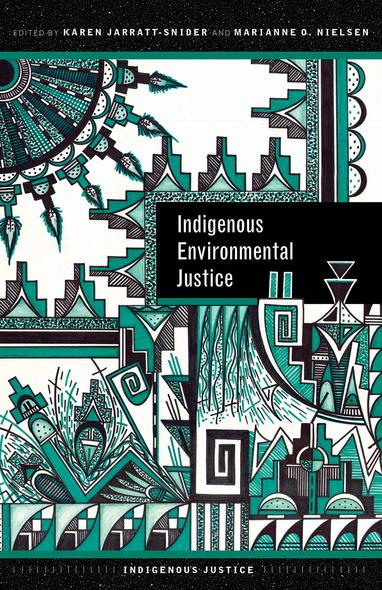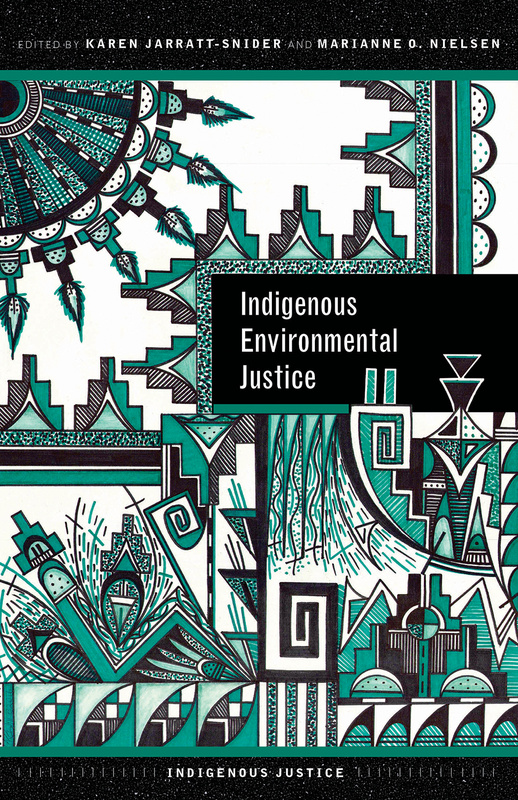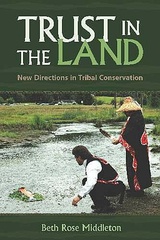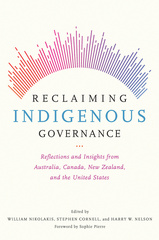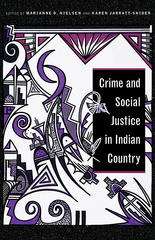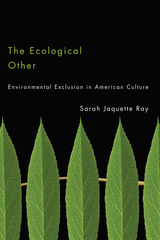Indigenous Environmental Justice
Edited by Karen Jarratt-Snider and Marianne O. Nielsen
SERIES:
Indigenous Justice
The University of Arizona Press
This volume clearly distinguishes Indigenous environmental justice (IEJ) from the broader idea of environmental justice (EJ) while offering detailed examples from recent history of environmental injustices that have occurred in Indian Country. With connections to traditional homelands being at the heart of Native identity, environmental justice is of heightened importance to Indigenous communities. Not only do irresponsible and exploitative environmental policies harm the physical and financial health of Indigenous communities, they also cause spiritual harm by destroying land held in a place of exceptional reverence for Indigenous peoples.
With focused essays on important topics such as the uranium mining on Navajo and Hopi lands, the Dakota Access Pipeline dispute on the Standing Rock Indian Reservation, environmental cleanup efforts in Alaska, and many other pertinent examples, this volume offers a timely view of the environmental devastation that occurs in Indian Country. It also serves to emphasize the importance of self-determination and sovereignty in victories of Indigenous environmental justice.
The book explores the ongoing effects of colonization and emphasizes Native American tribes as governments rather than ethnic minorities. Combining elements of legal issues, human rights issues, and sovereignty issues, Indigenous Environmental Justice creates a clear example of community resilience in the face of corporate greed and state indifference.
With focused essays on important topics such as the uranium mining on Navajo and Hopi lands, the Dakota Access Pipeline dispute on the Standing Rock Indian Reservation, environmental cleanup efforts in Alaska, and many other pertinent examples, this volume offers a timely view of the environmental devastation that occurs in Indian Country. It also serves to emphasize the importance of self-determination and sovereignty in victories of Indigenous environmental justice.
The book explores the ongoing effects of colonization and emphasizes Native American tribes as governments rather than ethnic minorities. Combining elements of legal issues, human rights issues, and sovereignty issues, Indigenous Environmental Justice creates a clear example of community resilience in the face of corporate greed and state indifference.
Jarratt-Snider and Nielsen’s book offers eight chapters written by, according to the bios, scholars almost entirely of Indigenous descent or with tribal membership, a circumstance that on its own makes this edited book a standout. However, I also found the individual chapters to be thoughtful, well researched, and well written at a level of interest for scholars as well as college and university students.’—Annie L. Booth, Canadian Journal of Native Studies XXXIX
‘Indigenous Environmental Justice introduces the field of Indigenous environmental justice (IEJ) by explicitly explaining the distinctions between IEJ and EJ through a series of illustrative case studies. The authors’ attention to EJ issues as ‘where we live, work, go to school, play, and pray’ works to expand policy makers’ understanding of IEJ, acknowledges and celebrates Indigenous self-determination to combat corporate–state violations of environmental justice, and contributes to the collaborative development of more precise solutions and interventions that support decolonial, Indigenous environmental leadership.’—Beth Rose Middleton Manning, author of Upstream: Trust Lands and Power on the Feather River
‘With focused essays on important topics such as the uranium mining on Navajo and Hopi lands, the Dakota Access Pipeline dispute on the Standing Rock Indian Reservation, environmental cleanup efforts in Alaska, and many other pertinent examples, this volume offers a timely view of the environmental devastation that occurs in Indian Country.’—Lee Ross, Washington Informer
Karen Jarratt-Snider is an associate professor and chair of Applied Indigenous Studies at Northern Arizona University and the co-editor of Crime and Social Justice in Indian Country.
Marianne O. Nielsen is a professor in the Department of Criminology and Criminal Justice at Northern Arizona University and the co-editor of Crime and Social Justice in Indian.
Marianne O. Nielsen is a professor in the Department of Criminology and Criminal Justice at Northern Arizona University and the co-editor of Crime and Social Justice in Indian.
Introduction
Karen Jarratt-Snider and Marianne O. Nielsen
PART I. PERSPECTIVES ON INDIGENOUS ENVIRONMENTALISM AND INDIGENOUS ENVIRONMENTAL JUSTICE
1. Powerful Parallels: Deep Ecology and the Writings of Vine Deloria Jr.
Richard M. Wheelock
2. Environmental Injustice, Land, and American Indian Religious Freedom
Karen Jarratt-Snider
3. Environmental Injustices and State-Corporate Crime on Navajo and Hopi Lands
Linda M. Robyn
4. Environmental Racism: Contaminated Water in Indigenous and Minority Communities
Linda M. Robyn
PART II.INDIGENOUS COMMUNITY RESPONSES
5. Two Cases of Navigating Legal Complexity: Environmental Justice in Barrow and Tar Creek
Karen Jarratt-Snider
6. The Water–Energy Nexus and Environmental Justice: The Missing Link Between Water Rights and Energy Production on Tribal Lands
Mia Montoya Hammersley
7. Not in Our Lands: A Canadian Comparative Case Study of Indigenous Resistance Strategies to Natural Resource Development in British Columbia and the Arctic
T. Timothy Casey
8. Urban Native American Women as Environmental Justice Leaders
Anne Luna-Gordinier
Conclusion
Karen Jarratt-Snider and Marianne O. Nielsen
Contributors
Index

